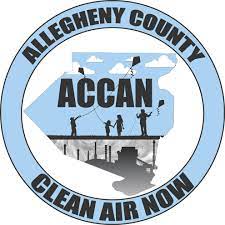About ROCIS
ROCIS Mission
Our mission is to reduce the impact of exterior environmental pollution in southwestern Pennsylvania, creating healthy and energy efficient indoor environments.




ROCIS Goals
Create a collective vision for healthy working, living, and learning environments
Develop the knowledge and capacity of organizations and individuals to improve indoor air quality
Catalyze collaboration within a community of stakeholders
ROCIS Objectives
Support, broaden & engage the ROCIS stakeholder network
Facilitate the use of low-cost monitoring equipment
Develop effective behavioral & technical interventions to improve indoor air quality
Disseminate ROCIS findings throughout southwestern PA and beyond
ROCIS Core Principles
We spend a lot of time indoors, whether that’s in residential or commercial/institutional settings. Exposure to indoor pollutants, some of which infiltrate from outside, can have adverse health impacts.
Rather than treating indoor and outdoor pollution as two separate public health concerns, ROCIS sees them as closely related. That’s why we work to empower our stakeholders—citizens, leaders, nonprofits, schools, designers, and contractors—to respond effectively to this environmental and health concern and reduce exposure to air pollutants, especially airborne particles.
These are the core principles that guide our work:
-
- Situations in which outdoor air is a significant threat to health indoors are of high concern.
- Children and people with respiratory health issues are particularly susceptible to air pollution.
- Continued research is needed to clarify health impacts, particularly interactive effects, of environmental sources of pollution.
- Source control is the ideal method of managing health concerns from all pollutants.
- Due to variations in weather, season, space, and time, identifying the source of outdoor pollutants can prove difficult.
- Accurate and inexpensive sensors, when available, have a strategic role to play in measuring indoor pollutant levels and the impact of interventions.
- Low-income families often deal with substandard housing, proximity to pollutant sources, and unaffordable mitigation measures.
- In-home monitoring should be accessible to all, either through equipment loans or community-based projects.
- Systems to reduce pollution exposure may have an energy cost but can also be an integral part of a comprehensive energy use reduction effort.
- There is a critical need to demonstrate and disseminate mitigation solutions, incorporating continual improvement to assess efficacy and refine guidance.
ROCIS Timeline
Since 2014, the ROCIS team has been working to reduce the impact of outdoor contaminants in indoor spaces. With expertise in indoor air quality, monitoring, energy performance, public health, behavioral and technical interventions, and data analytics, our team members have delivered presentations, webinars, and white papers on air quality, monitoring, and interventions to reduce exposure.
Through initiatives like the Low Cost Monitoring Project (LCMP) and the Clairton Air Filter Project, we’ve put that knowledge into practice. We have also developed numerous tools to help residents visualize and understand the air quality in the places they live, work, and learn.
We’re excited to continue this work well into the future.

2014
July 23, 2014
Don Fugler presents “Protecting Homes from Outdoor Pollution”:
Presentation slides (PDF)
Presentation video (MP4 – 304MB)
Presentation video (WebM)
Presentation audio (MP3)
Phil Johnson presents “SWPA Outdoor Pollutants: Context”:
Presentation slides (PDF)
Presentation video (MP4 – 130MB)
Presentation video (WebM)
Presentation audio (MP3)
September 11, 2014
Thomas J. Phillips presents “Protecting Commercial Buildings from Outdoor Pollutants: School, Office, and Multifamily Buildings”:
Presentation slides (PDF)
Presentation video (MP4 – 372MB)
Presentation video (WebM)
Presentation audio (MP3)
November 15, 2014
Publication of ROCIS White Papers
“Protecting Homes from Outdoor Pollution” by Don Fugler
“Protecting Commercial Buildings from Outdoor Pollutants: School, Office, and Multifamily Buildings” by Thomas J. Phillips (Appendix)
November 21-25, 2014
Part I: Indoor Concentrations of Outdoor Air Pollution by Brent Stephens, Ph.D.
Part II: Health Impacts, Standards, Monitoring, and Building-level Mitigation by Bill Turner
December 4-5, 2014
Creating Healthy Places: Protecting Indoor Spaces from Outdoor Pollutants
2015-2016
February 27, 2015
Next Steps: Western PA Initiatives to Reduce Outdoor Contaminants in Indoor Spaces
September 2015
First Low Cost Monitoring Project Cohort!
February 2016
Launch of Weebly Dygraph to compare participants’ outdoor data
February 26, 2016
Insights From and Implications of the ROCIS Low Cost Monitoring Project
2017-2020
May 2017
Launch of ROCIS Data Averager
August 2017
Launch of ROCIS Data Explorer
January 2018
Release of ROCIS Guidance Document, “Ducted Range Hoods: Recommendations for New and Existing Homes”
October 2019
ROCIS team shifts to virtual workspace. Equipment storage near Waynesburg, PA.
2017 - 2020
Collaboration with Conservation Consultants, Inc. CCI provides meeting, work, and storage space in Pgh’s SouthSide
April 2020
First Virtual LCMP Cohort
June - September 2020
Deployment of the Air Filter Project serving 47 households in Clairton, PA
November 2020
Collaboration with ACCAN to deploy interventions in Ohio Valley homes begins
2021-Today
May 2021
Launch of Purple Air Plots, an online visualization tool
December 2021
Launch of 50th LCMP Cohort!
Over 400 LCMP Participants to date
Thank you to the following organizations for partnering with us
A special thank you to The Heinz Endowments for its support of the ROCIS initiative!



























Office of Sustainability

School of Public Health

Mascaro Center for Sustainable Innovation
Upper Saint Clair Citizens for Land Stewardship


